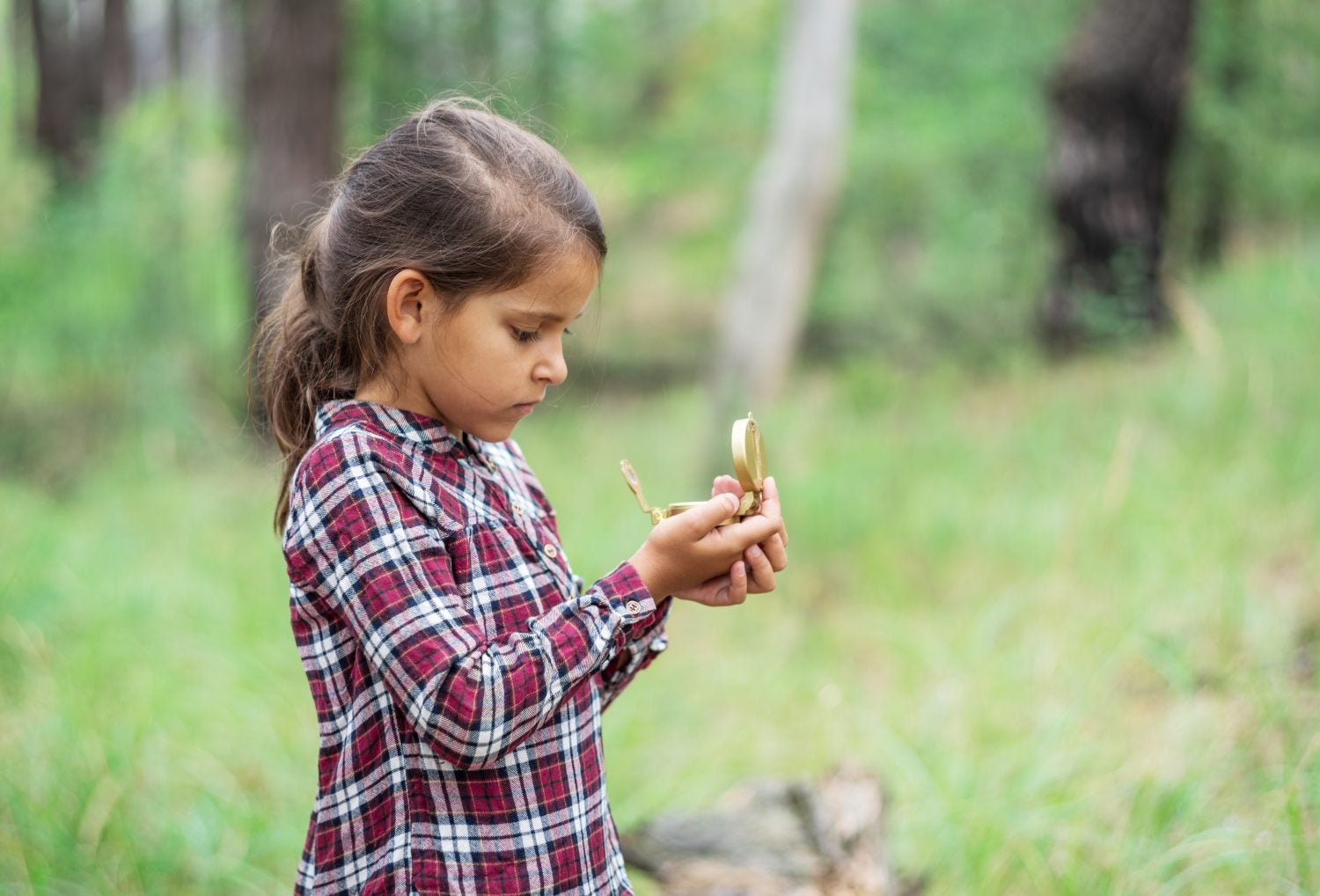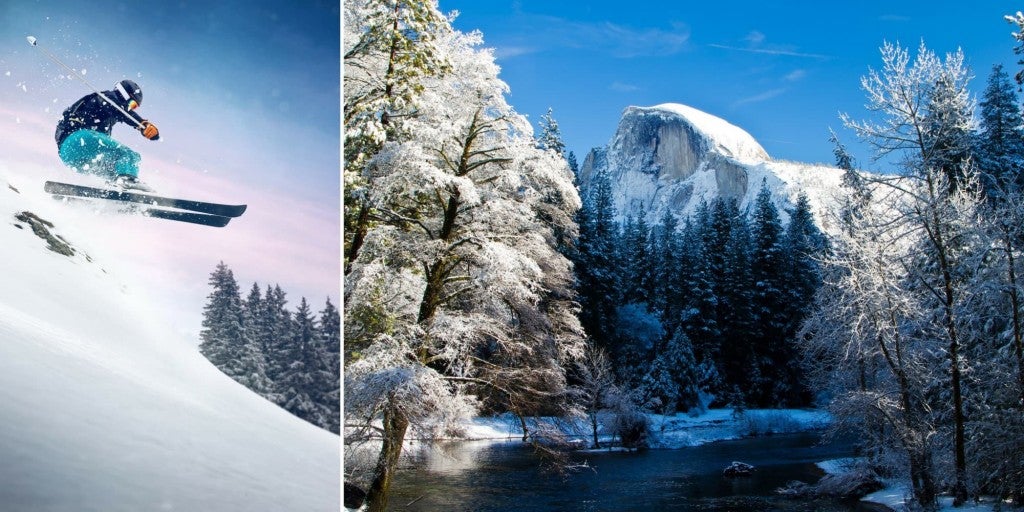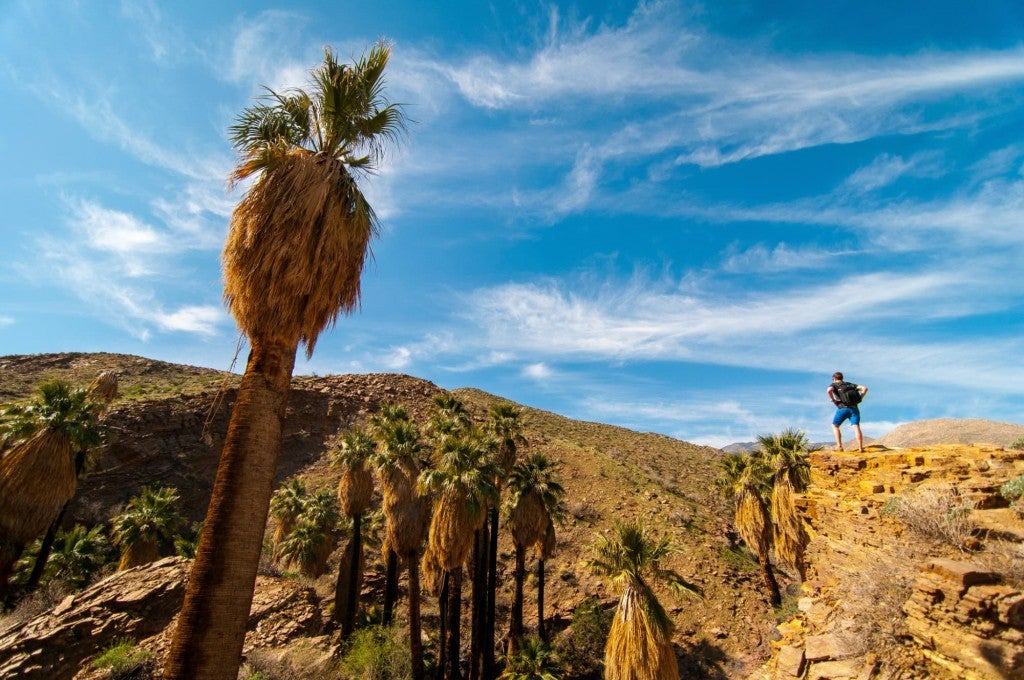This article on how to geocache is brought to you by Brunton, your go-to brand for outdoor compasses that are lightweight and compact for all navigational needs! Brunton compasses serve as a great addition to a survival kit or can be used for a scavenger hunt because they are accurate and effective.
Hide-and-seek, a digital scavenger hunt, a quest for hidden treasure—there are a lot of ways to describe geocaching, an outdoor pastime that’s exploded in popularity over the past twenty years. It officially got its name and its start when the government approved civilian access to satellite-driven location data, and early adopters began to hide and find small treasures anywhere from big cities to rural places and outdoor recreation destinations.
Ever since GPS technology really took off in the early aughts, people all over the world have been learning how to geocache. Once a way to connect online message board users in the real world, now there are competitions, events, and clubs dedicated to beginners and experts alike. There are geocaches hidden in New York City, and there have also been caches discovered in McMurdo Station, Antarctica. Millions of people have discovered geocaching is a fun, affordable, easy way to blend technology with the outdoors, all while creating a sense of global community.
Here’s what you need to know if you want to learn how to geocache from your campground the next time you get to spend a little time in the great outdoors:
How Geocaching Got Its Start
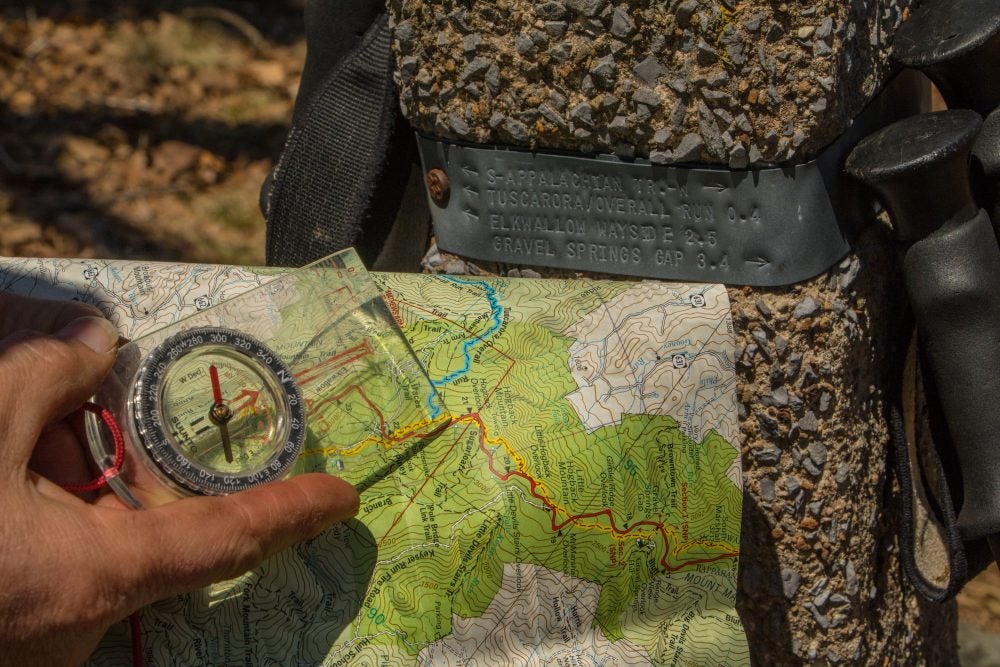
Photo from The Dyrt camper Shari G.
Geocaching (pronounced gee-oh-khash-ing) comes from the Greek word “gē,” meaning “earth” and from the French word “cacher,” meaning “to hide.” Before it was called geocaching, a man named Dave Ulmer invited others to join him in what he called the “Great American GPS Stash Hunt.” He wanted to test out the accuracy of the new GPS location data, and the civilian devices used to pinpoint GPS coordinates.
Ulmer hid some nice prizes like videos, books, and a slingshot in the woods of Beavercreek, not far outside of Portland, Oregon. He then dropped the coordinates and the concept into a message board, and within a few days, a new past time had begun. Within a month, another early enthusiast named Matt Stum suggested the name “geocaching” as a shorter, catchier name for the sport than “GPS stash hunt,” and it stuck. Caches began to pop up around the world, and more and more people caught on.
These days, it isn’t just tech geeks who love and know how to geocache. The sport has continued to grow as GPS technology has grown more ubiquitous, and it’s enjoyed by people of all ages and interests. It’s simple to do, and you don’t even need special equipment when millions of people are carrying GPS-capable cell phones in their pockets. Despite all the sophisticated technology and satellites that make geocaching possible, it’s also completely possible to try geocaching the analog way.
Geocaching is an extra fun way to teach kids or adults about wilderness navigation. While you can certainly use your cellphone or a GPS device like the Garmin eTrex, you can also practice your ability to precisely explore a variety of topography and terrain by seeking out caches with a pencil, paper, and your trusty outdoor compass.
How to Geocache: A Beginner’s Tip Guide

Photo from The Dyrt camper Bjorn S.
Geocaching is, at its most basic, a pretty straightforward hobby. Someone puts a treasure in a reasonably sturdy, weather resistant container, hides it somewhere, and records the GPS coordinates of the exact spot where the item was stashed. Then they post online with instructions that help other people find the cache. Another person then downloads the GPS coordinates of the cache, and starts looking for the exact location.
Of course, there are several details you need to keep in mind. Over the years, best practices have evolved to make it easier to learn how to geocache, to practice Leave No Trace principles when geocaching, and to leave the general public with as good an impression of geocaching as possible. Some guidelines to keep in mind are:
1. What to Include In Your Cache (And What To Leave Out Entirely)
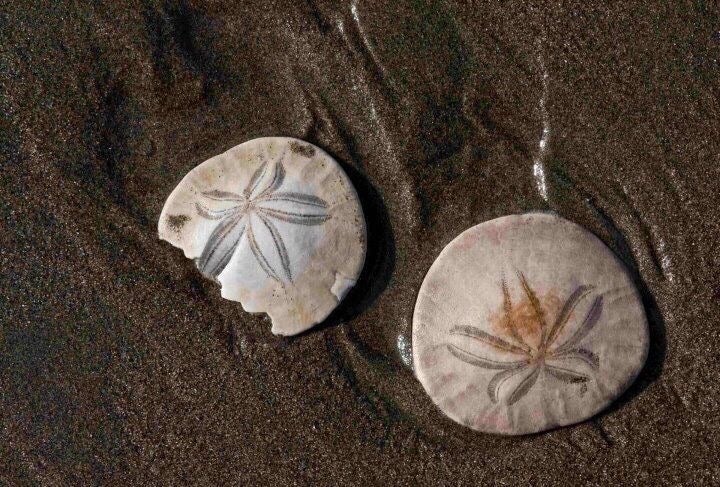
Photo from The Dyrt camper Carla S.
Every cache must include the following items:
- A sturdy container
- A log book to record who has found the cache and perhaps swapped out the contents
- Some sort of token or treasure for the next person to discover
Beyond that, the sky’s the limit, and that’s where the fun and creativity of geocaching come into play. You can leave action figures, books, gift cards, carabiners, silver dollars, or other trinkets.
One of the other requirements of geocaching is that all caches should be appropriate for all ages. Let’s say you frequent cannabis-friendly campgrounds — it’s a big no-no to cache your scoobie snacks or other infused items. The same goes for weapons, food, other perishables, hazardous materials, etc. Keep it legal, keep it safe, and keep it family-friendly. Remember, geocaching relies on volunteers and public goodwill, so keeping it clean and safe helps keep geocaching available for millions to enjoy.
Do feel welcome to plan your cache around a theme and to have a lot of fun with the design of the container, the location, and the contents. Don’t use a cache as advertisement or promotion, though. Everything should stay in good fun. Do feel welcome to include trackables, or cache finds that are designed to travel from cache to cache with instructions to, say, get from New York to New Zealand. Trackables also go by names like Geocoins, Travelbugs, or Pathtags, each with slightly different methods for following the item’s travels.
The most important thing is to always leave something to replace what you take so that no cache has to be logged “TNLN,” or Took Nothing, Left Nothing, meaning there were no goodies to find.
2. Choose Containers Wisely

Photo from The Dyrt camper Hailey O.
What’s the best container for geocaching? That can be a tricky question for anyone first learning how to geocache. It can depend on the climate, terrain, what the cache is holding, your budget, and what you might have on hand. You want the contents to be protected from the elements, and you want to be able to hide the cache without burying it (another geocaching no-no), but you don’t want it to be too easy to find or something that will deteriorate. You can use anything from an old coffee canister to army surplus to purpose-made geocaching containers.
One thing to keep in mind, however, is that not everyone is aware of geocaching. You might know that the box you’ve finally stumbled across in the woods is something safe and family-friendly left by a fellow geocaching fan. However, a hiker who has never heard of geocaching might find reason to be suspicious and could call the authorities.
That’s why many geocachers have moved away from using old military-grade ammo boxes for their stashes. It’s understandable why they were so popular at first— ammo boxes are designed to be incredibly weather-resistant and have room enough for both the treasure and the log book that is required of all caches. Some people still use ammo boxes but are careful to remove all military markings and cover the boxes in geocaching stickers to make it clear what the container is for.
Clear containers are frequently used in the geocaching community now to make it even more obvious what the box holds, and that it’s no threat. Geocaching has even gotten big enough now that some companies make special containers especially for the purpose, including some that cleverly blend into natural environments and look like fake rocks. So whether you buy a purpose-made geocaching box or repurpose an old pretzel container, the important thing is that it can hold all the things that make up a cache, and keep them dry.
3. What Equipment Do You Need?
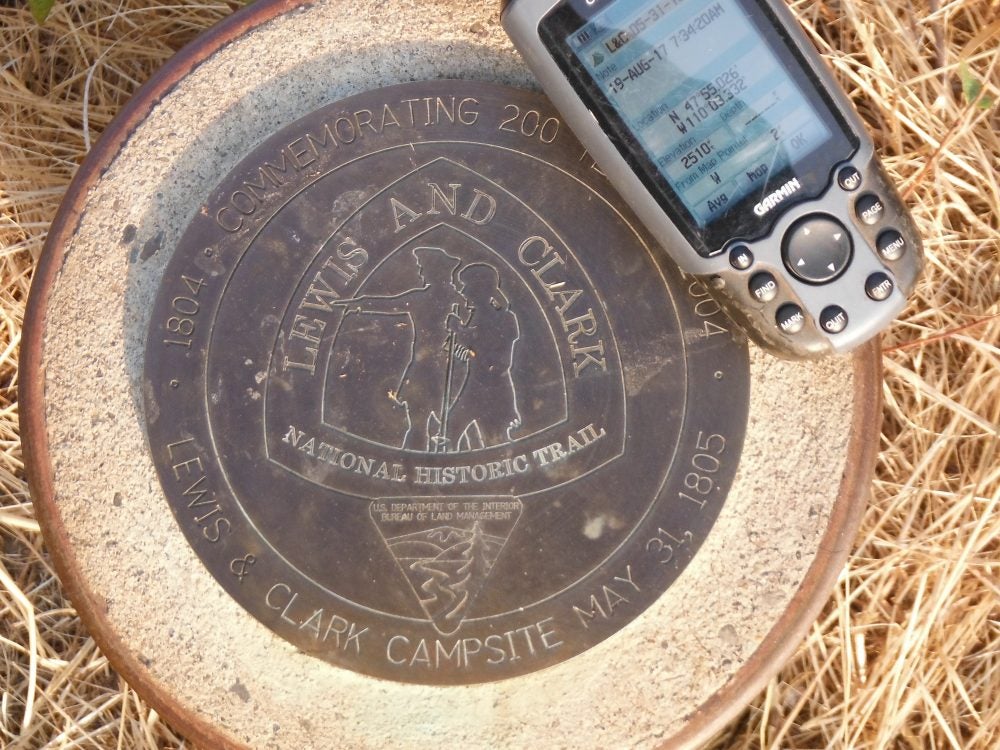
Photo from The Dyrt camper Dexter I.
Good news: you don’t need much when it comes to gear for geocaching. The main essentials are a GPS device or a GPS-enabled cell phone and a Geocaching.com account. However, many of the cheaper GPS devices will only show you a straight line between you and the cache, and not necessarily information on how best to reach your prize.
That’s where maps, topographical guides, and an outdoor compass come in. A huge part of the fun of learning how to geocache is learning navigation skills, and conversely, figuring out how to make a cache a fun challenge to find. If you’ve never used a compass before or have only hiked trails with very clear paths and blazing, there could be an exciting learning curve.
Many experienced geocachers, for example, will think about sightlines when they hide a cache, knowing that another geocacher may almost certainly come from a particular direction. Others will choose locations that are seemingly simple to reach according to a GPS device but are actually a bit of a puzzle once you involve elevation, obstacles like trees and boulders, or other features of the landscape.
Another layer to geocaching is that some caches are part of a sequence, each cache providing clues necessary to figure out the location of the next prize. Maps and outdoor compasses can be crucial to solving another geocacher’s clever hiding place, or plotting your own secret stash. Sometimes they can also be useful for deciphering coded hints that geocachers use to add another level of discovery to the hunt.
4. Other Geocaching Best Practices
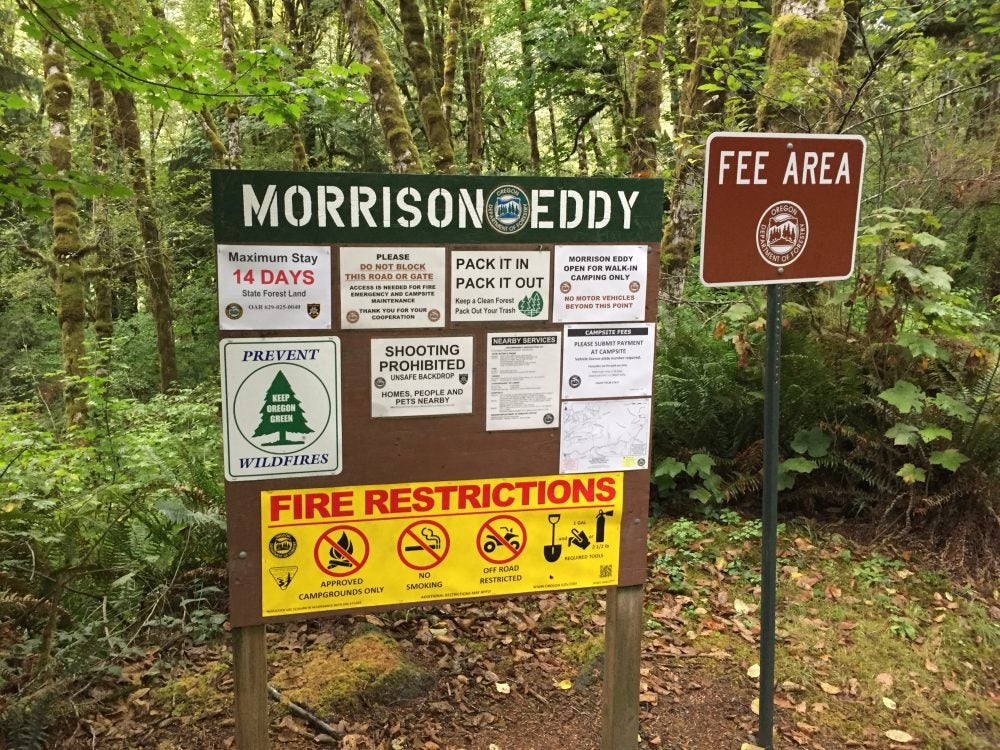
Photo from The Dyrt camper Bjorn S.
Some of the other essential tenants for anyone studying up on how to geocache are the same as most other outdoor pursuits. One of the biggest is to Leave No Trace. A responsibly put together cache won’t damage the environment or affect wildlife. That’s why burying caches is a no-no.
Be smart about hiding caches off-trail or in sensitive ecosystems, like bird nesting sites, erosion areas, or places where native vegetation is trying to make a comeback. Think ahead if you, say, try to hide a cache in a tree. Will many people climbing that tree in search of the cache ultimately harm it or create undue wear and tear?
Keep safety in mind, too. Hiding caches in or near electrical boxes, railroad tracks, under bridges, near houses, on private property, etc. can all present a hazard for geocachers who know their coordinates, but not exactly what they’re getting into. Be considerate of the regulations set by individual state and national parks, and how a cache and the activity it inspires might look to outsiders who are unaware of the past time.
You can get a sense of how difficult it might be to find a cache thanks to a handy rating system. One star means the geocache is easy to access, even if you have mobility limitations or need assistive devices like a wheelchair. Five stars mean you will need special equipment such as four-wheel drive, a boat, an ATV, rock climbing gear, etc. to reach the cache’s location.
Where to Geocache While Camping?
Now that you know how to geocache, where do you go? Of course you can look up thousands of geocache coordinates online, but there are more than a few campgrounds which The Dyrt Campers have found to be excellent geocaching destinations. Some even host events and encourage geocachers to come enjoy their sites.
1. Fort Worden State Park in Port Townsend, WA
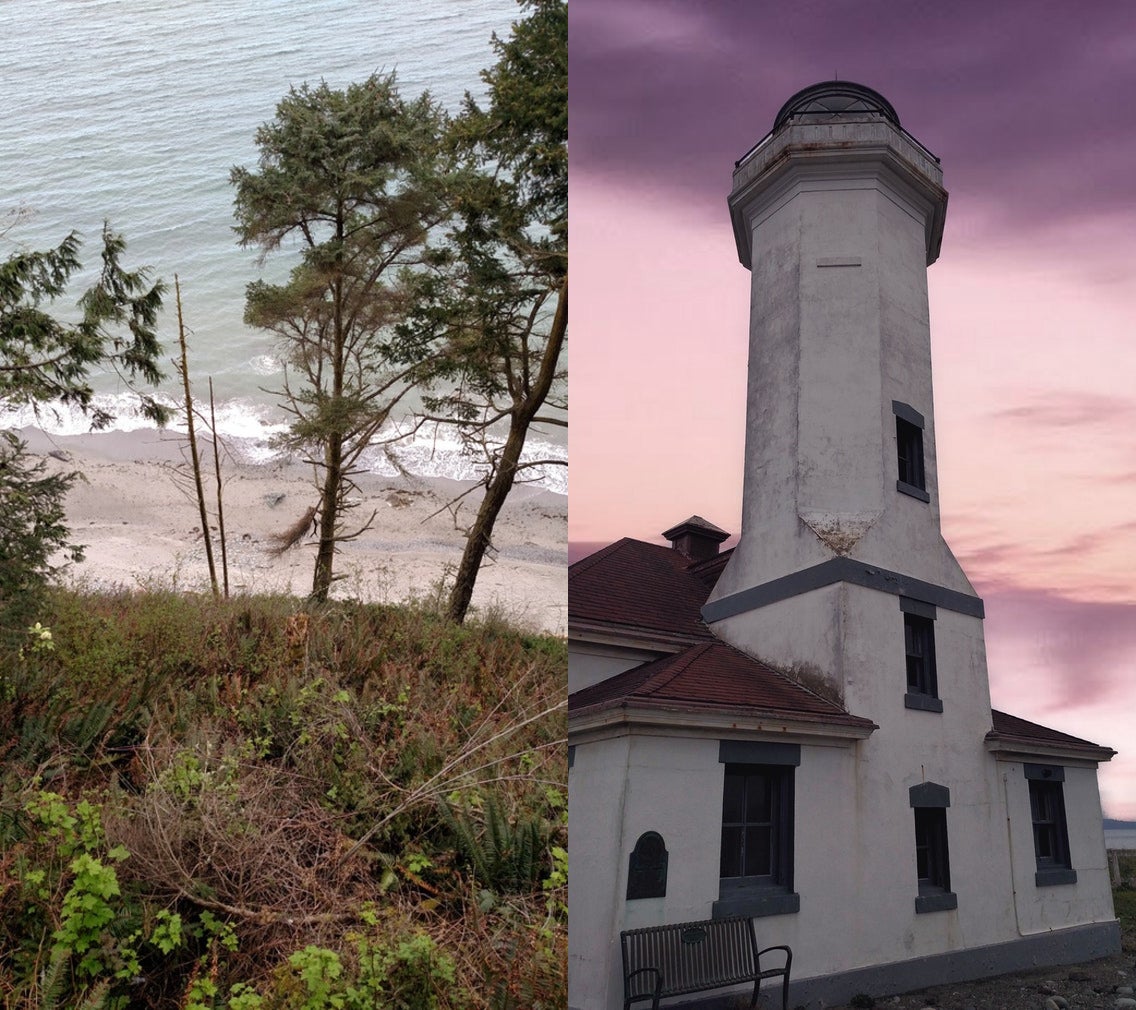
Photos from The Dyrt camper Dani H.
Already popular with families thanks to its role in Seattle-area World War II history, Fort Worden has also become quite the geocaching destination. In 2013 the Washington State Geocaching Association got involved with the Washington State Parks Centennial GeoTour as part of the “100 caches in 100 parks to celebrate 100 years” initiative, and Fort Worden was part of the fun.
“Geocaching galore! We enjoyed walking on the beach and hiking around the park to all the geocaches. Great food at the guardhouse and the staff is super friendly. There is so much to do at this state park from the museum, bunkers to explore and just relaxing.” –The Dyrt camper Becky R.
2. Dar State Forest in Goshen, MA
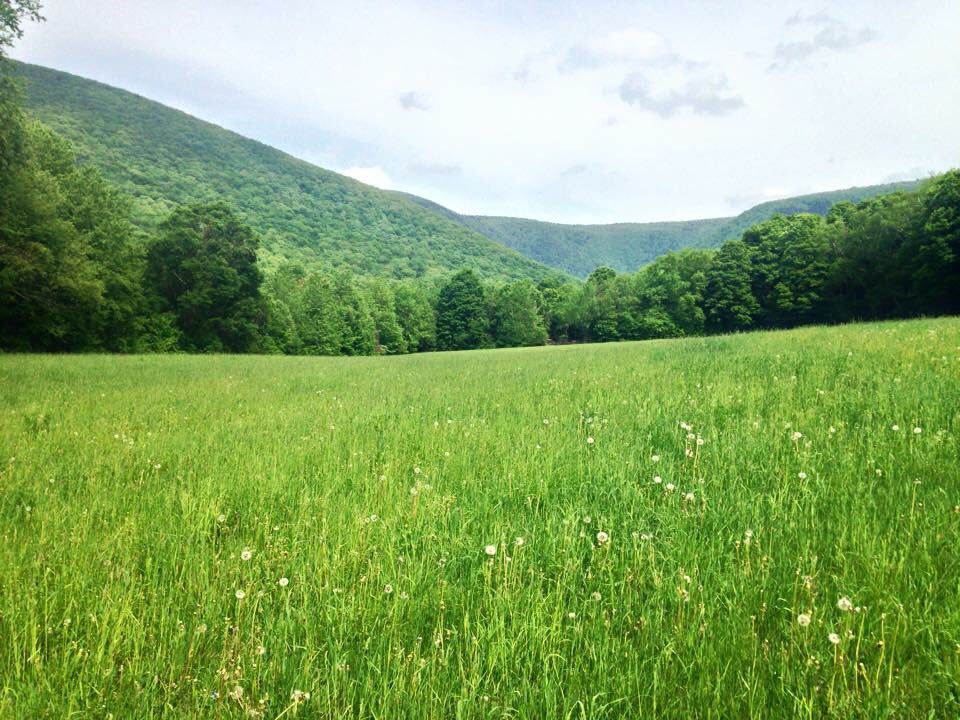
Photo from The Dyrt camper Kristin J.
Dar State Forest has been home to hidden caches since at least 2002, and the folks who mind the cache have added all kinds of fun extras that might change up the procedure for how to geocache here. For example, there’s a cipher you can break to get a hint if you can’t find the cache. For another, when you do find it, they request you take a selfie with an included disposable camera. This is just the kind of campground where you’ll be glad you brought the map and compass since there’s no cell-phone reception or WiFi to help you in your quest.
“Great geocaching! The sites were a good size and in good shape. Very narrow parking areas on the sites. Restrooms were well kept. We spent some time on the hiking trails and found plenty of geocaches, which was awesome.” –The Dyrt camper Cynthia K.
3. Bastrop State Park in Bastrop, TX
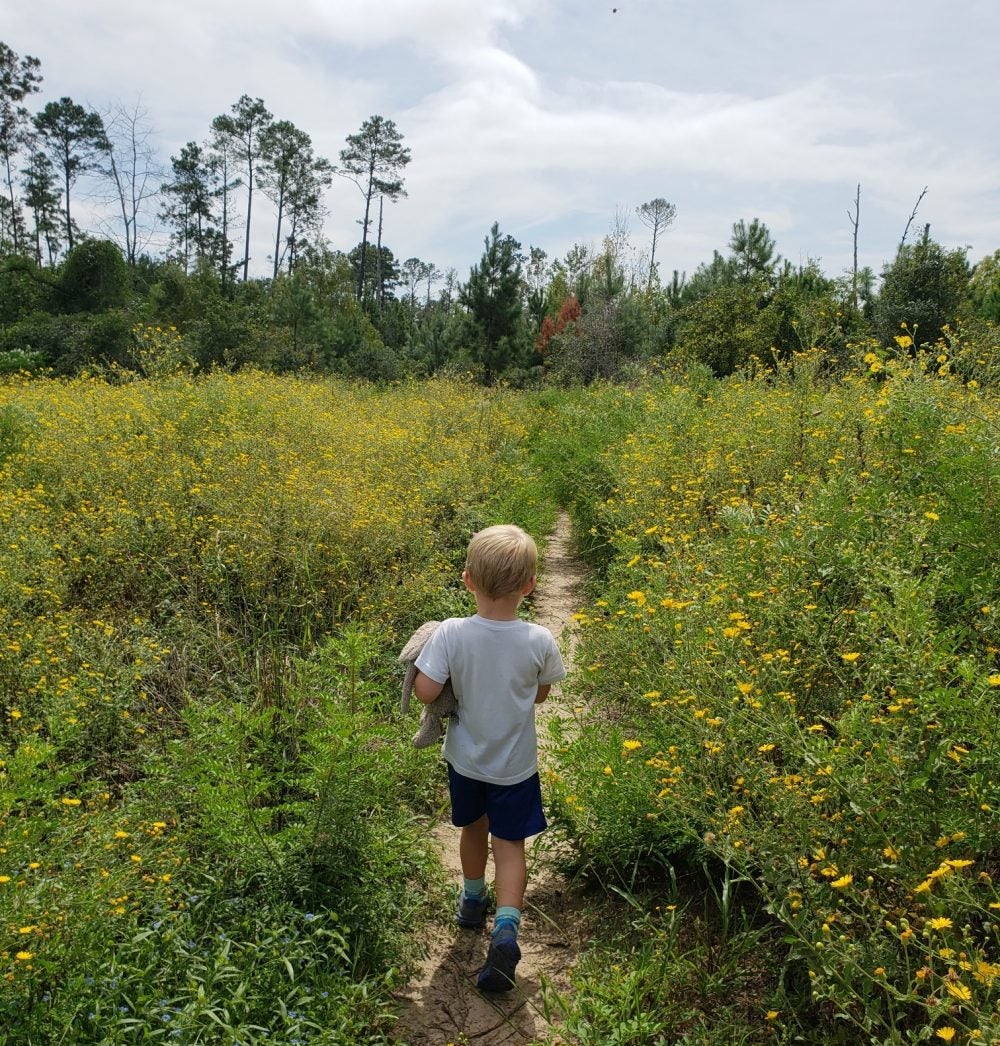
Photo from The Dyrt camper Brittany S.
In 2010, Texas State Parks arranged a 10-park-wide geocaching challenge. The first twenty-five people to fill out “passports” indicating they had visited all ten caches won a commemorative Texas State Parks Geocache Challenge coin and other prizes. Though the challenge has ended, Bastrop State Park is still a great place to go geocaching, and many of the caches are still active. Enjoy the wildflowers, wheelchair accessible cabins, and dining hall, as well as relatively new facilities.
“Had a great time camping and geocaching with the boys! Out hour trek turned into nearly 4, glad my kids were happy to keep going to the next cache.” –The Dyrt camper Stacy H.
4. Red Shale Campground in Custer Gallatin National Forest, MT
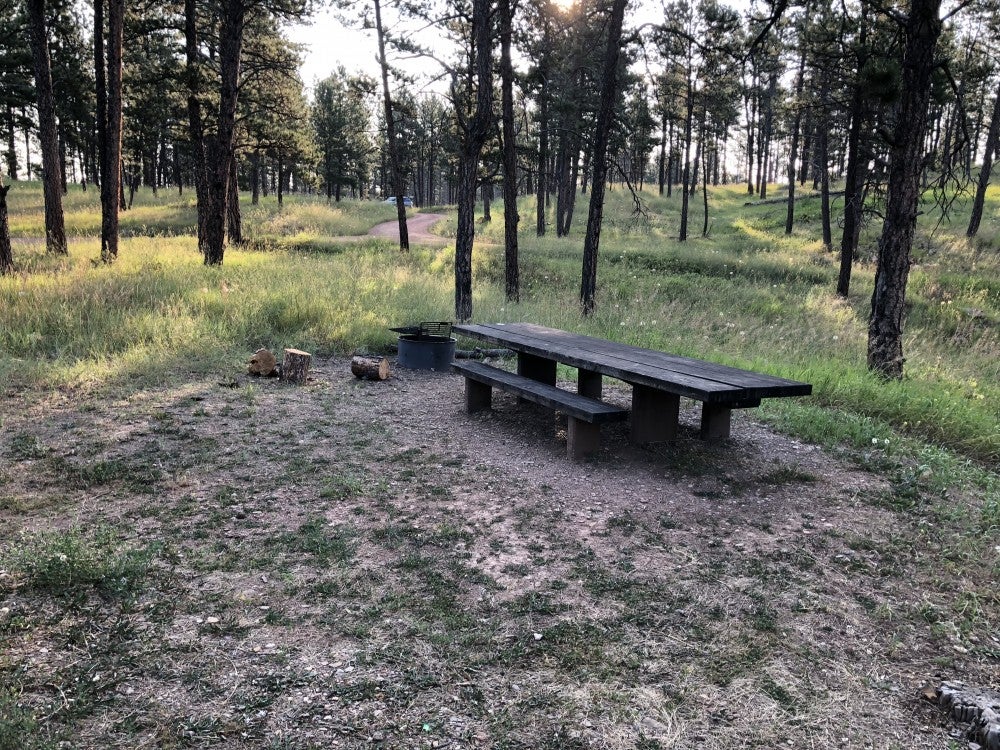
Photo from The Dyrt camper Kelsey L.
Custer Gallatin National Forest is home to all sorts of geocaching opportunities, including Red Shale Campground and nearby Stag Rock Vista Point. Some were part of the Get Outside Montana celebration in 2012, but six years later they are still in use. Not only that, Custer Gallatin National Forest is home to a multi-cache, a type of geocache where you need to go to several locations to find the coordinates for the final cache with the real prize.
“Free campground in Custer National Forest. Sites include large picnic table and fire ring. Pit toilets available for use. The campground is right off of 212 about 6 miles east of the town of Ashland.” –The Dyrt camper Kelsey L.
5. Wayside Oasis RV Park in Alamo Lake, AZ
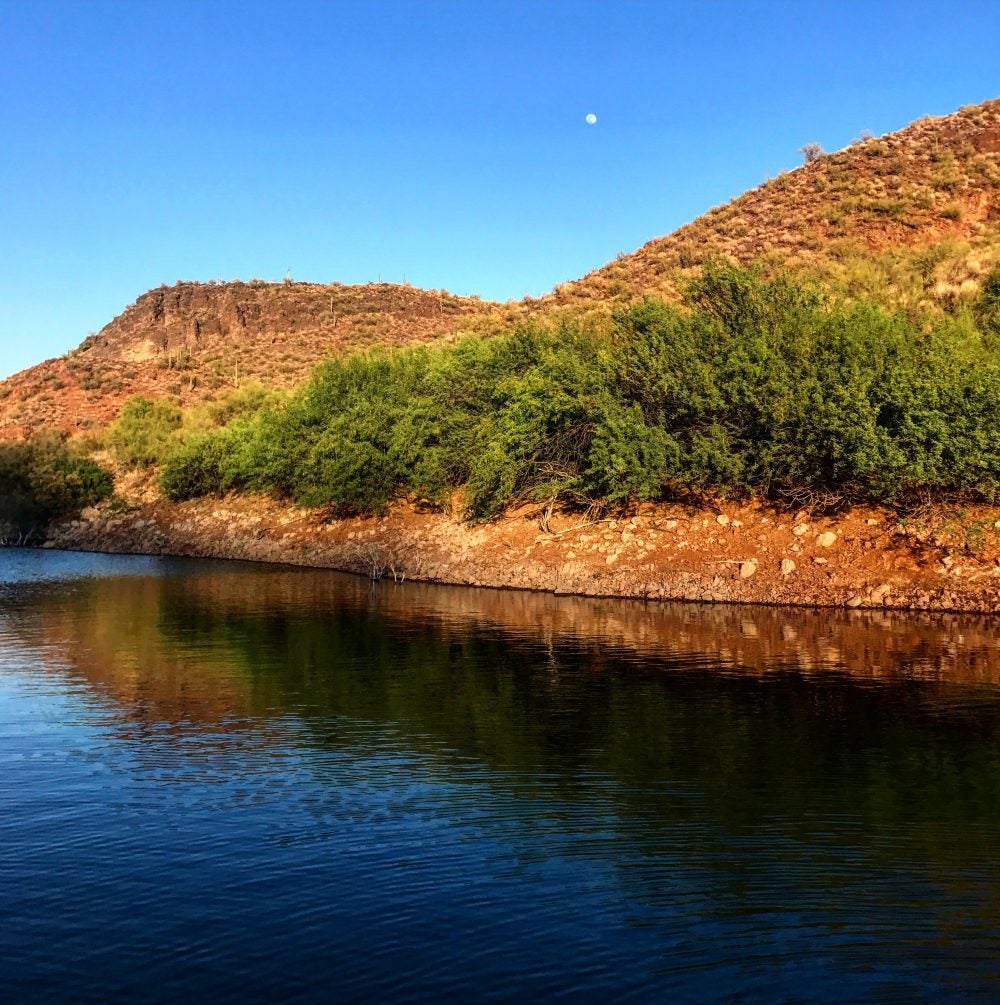
Photo from The Dyrt camper Chloe D.
There are lots of geocaches to hunt for in the Alamo Lake State Park area, and few better places to rehydrate and freshen up afterward than Wayside Oasis. This former inn used to be known primarily by locals, but word has gotten out and now it’s a camping destination in its own right. That’s saying a lot for a lonely corner of the desert triangulated between the much bigger parks at Kofa National Wildlife Refuge, Coconino National Forest, and Mojave National Preserve!
“Everyone at Alamo Lake raves about the food here. It’s straightforward bar food but they do it up right and being able to add a cold beer makes it that much better! Plus it’s nice to have access to laundry facilities after getting all stinky catching fish at the lake.” –The Dyrt camper Chenary
6. Kayak Morris Campground in Chicago, IL
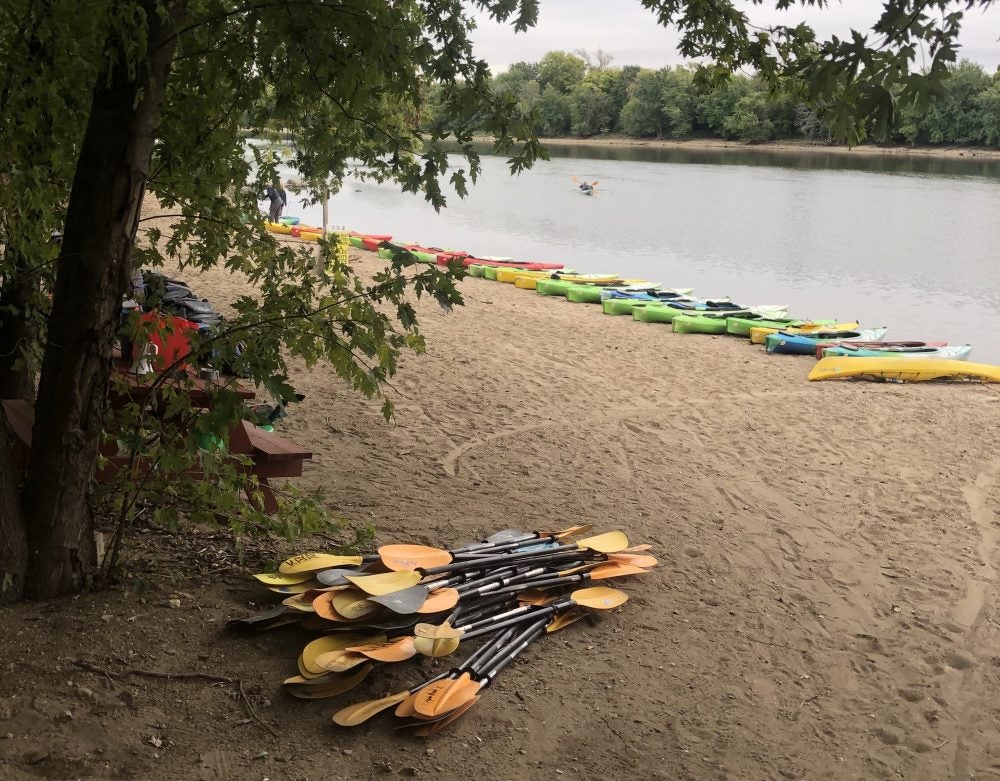
Photo from The Dyrt camper Sasha W.
In 2012, Kayak Morris Campground hosted an Earth Day event that included a How to Geocache workshop and another activity beloved by geocachers— a park cleanup. Geocaching enthusiasts often host events called Cache In Trash Out (CITO), in order to improve the wild spaces in which they love stashing secret caches.
“We brought our own kayaks and launched right from our campsite which was amazing but they rent kayaks for pretty cheap If you don’t have your own. There is a confluence across the river which is great to float on.” –The Dyrt Camper Amanda W.
7. North Iron Springs Group Camp in Ashley National Forest, UT
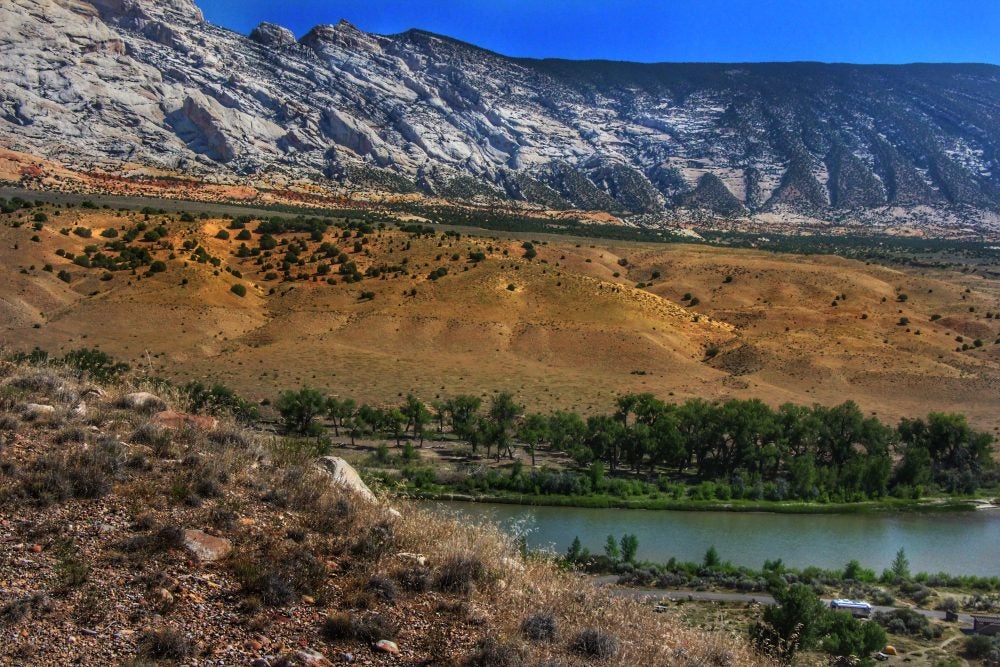
Photo from The Dyrt camper Curtis B.
Over a hundred years ago, this region was filled with treasure hunters looking for gold. Now it’s filled with campers who enjoy ATVs, overlanding, hiking, and geocaching in Ashley National Forest. Iron Springs Group Camp is a fun spot to congregate, work on finding caches together, and even organize a little CITO during your stay. Geocaching is always pretty fun, but it’s even nicer in gorgeous red rock countryside.
“Many trails for hiking and OHV travel. In the heart of geocaching country. There are a couple bathroom facilities available at the group site. Ice cave, grizzly ridge, brush creek cave, the old copper mines all in the area. Highly recommended for any adventurer.” –The Dyrt camper Cortney M.
8. Dinosaur Valley State Park in Glen Rose, TX
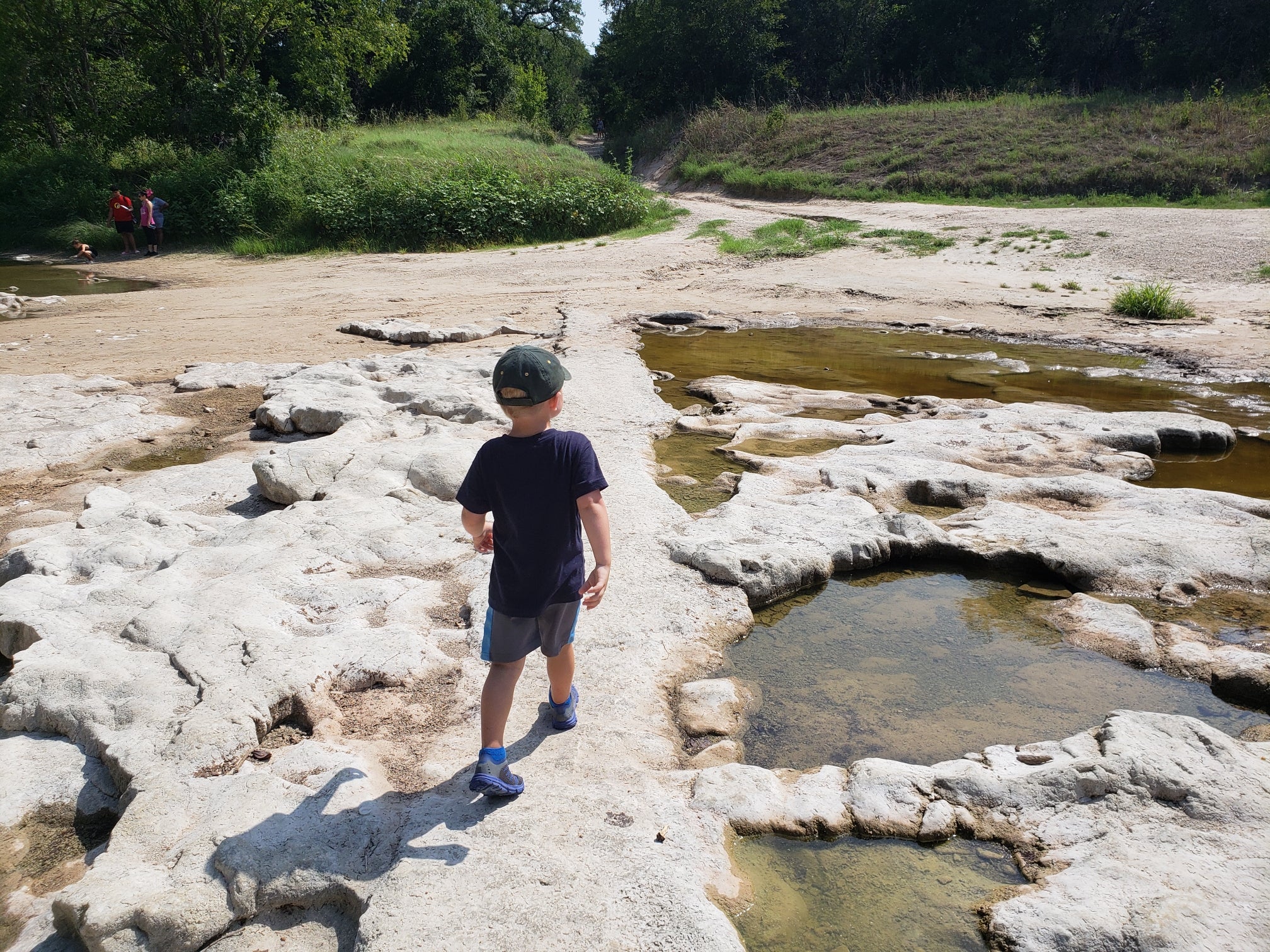
Photo from The Dyrt camper Brittany S.
Another stop in Texas’ geocaching challenge, Dinosaur Valley State Park has a lot more than just camping near dinosaur footprints (and giant dinosaur sculptures!) to keep families entertained. There’s lots of hiking and fishing, it’s dog-friendly, and it offers a great example of earthcaching. Yes, that might sound a little redundant when “geo” means earth, but “earthcaching” is part of the vocabulary everyone picks up as they learn how to geocache.
Earthcaching is a type of cache where the prize isn’t a trinket, but learning about a unique feature of the earth. A spot with dinosaur footprints millions of years old definitely qualifies and some of the caches require you learn certain facts around the park to figure out where the next Earthcache is hidden.
“Geocaching takes us on many adventures. We’re adding this one to our memory banks…. Near Glen Rose, this campground is close enough for comfort, but offers some truly unique things- Dinosaurs! What a fun trip!” –The Dyrt camper Frankie B.
9. Highline Lake State Park, CO
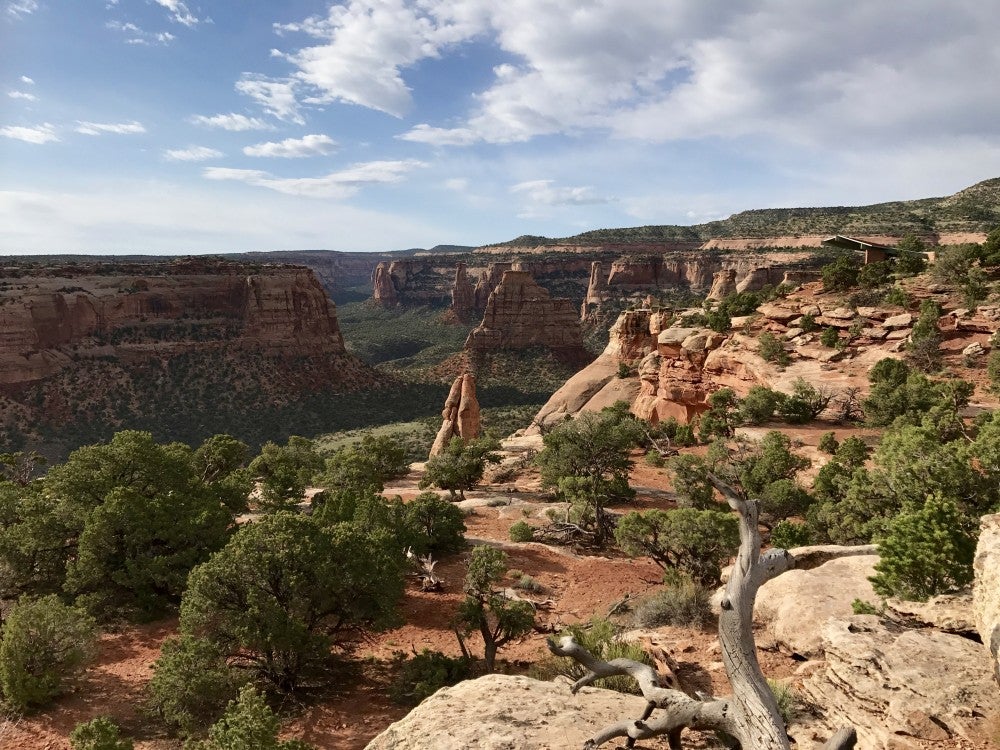
Photo from The Dyrt camper Sarah N.
In the summertime, Highline Lake is a big draw for boaters, swimmers, and birders eager to enjoy the water and catch a glimpse of pelicans, great blue herons, eagles, sandhill cranes, and especially the rare Vermilion flycatcher. There are about 200 species of birds in and around Highline Lake, as well as numerous fish and other wildlife.
“We chose this campground this time around because it has a lake that you can swim in. Plus, we were working on a geocaching event and needed to add to our collection, and there are 13 in the park. You need a boat for one of them, so we weren’t able to find it, but there are boats that you can rent so if you are really interested in grabbing that one, you can without too much trouble.” –The Dyrt Camper Melissa K.
Related Campgrounds:
- Atwood Lake Camping, Mineral City, OH
- Fort Custer Campground, Augusta, MI
Popular Articles:
Articles on The Dyrt Magazine may contain links to affiliate websites. The Dyrt receives an affiliate commission for any purchases made by using such links at no additional cost to you the consumer.

